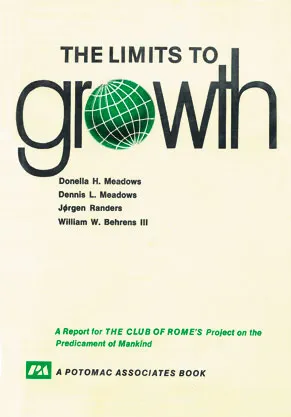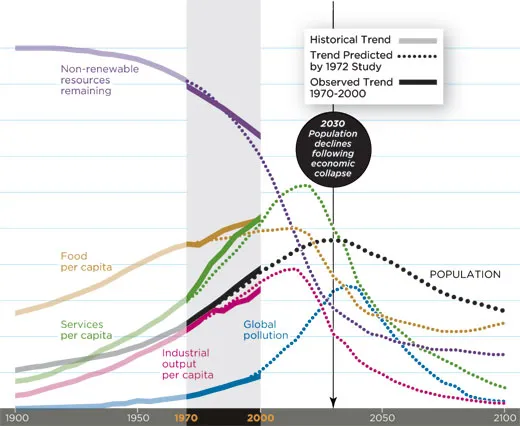Looking Back on the Limits of Growth
Forty years after the release of the groundbreaking study, were the concerns about overpopulation and the environment correct?
Recent research supports the conclusions of a controversial environmental study released 40 years ago: The world is on track for disaster. So says Australian physicist Graham Turner, who revisited perhaps the most groundbreaking academic work of the 1970s,The Limits to Growth.
Written by MIT researchers for an international think tank, the Club of Rome, the study used computers to model several possible future scenarios. The business-as-usual scenario estimated that if human beings continued to consume more than nature was capable of providing, global economic collapse and precipitous population decline could occur by 2030.
However, the study also noted that unlimited economic growth was possible, if governments forged policies and invested in technologies to regulate the expansion of humanity’s ecological footprint. Prominent economists disagreed with the report’s methodology and conclusions. Yale’s Henry Wallich opposed active intervention, declaring that limiting economic growth too soon would be “consigning billions to permanent poverty.”
Turner compared real-world data from 1970 to 2000 with the business-as-usual scenario. He found the predictions nearly matched the facts. “There is a very clear warning bell being rung here,” he says. “We are not on a sustainable trajectory.”
/https://tf-cmsv2-smithsonianmag-media.s3.amazonaws.com/accounts/headshot/mark-strauss-240.jpg)


/https://tf-cmsv2-smithsonianmag-media.s3.amazonaws.com/accounts/headshot/mark-strauss-240.jpg)